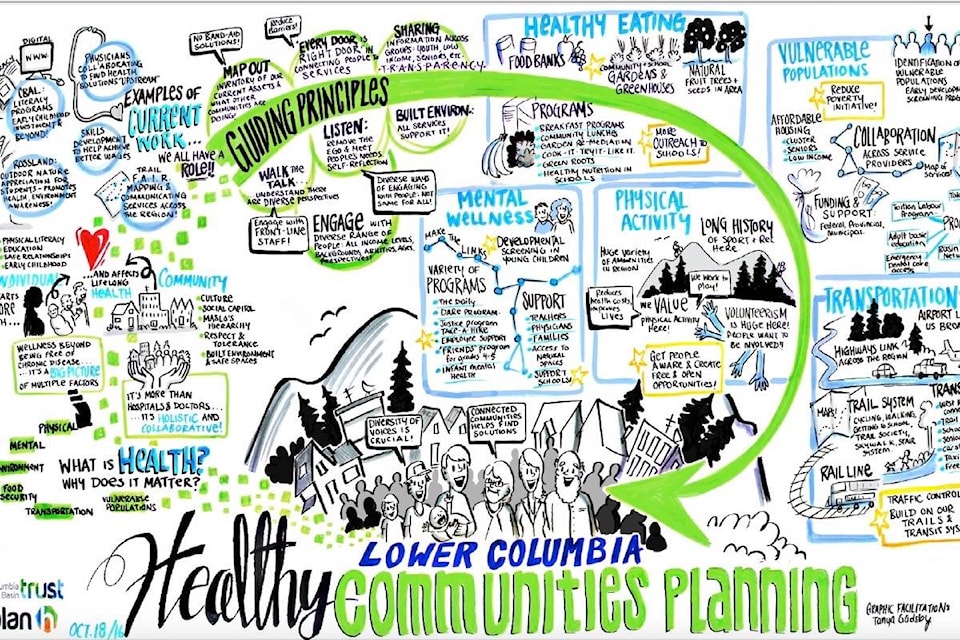Forty stakeholders and 18 months of collaboration have resulted in a framework for decision-making called the Lower Columbia Healthy Communities Plan.
Trail council was the first in the region to officially adopt the plan during the Sept. 11 governance meeting.
Made possible through a $5,000 PlanH Healthy Communities Capacity Building Fund, the document is meant to be a tool to help municipal leaders make decisions about parks and recreation programming and other community initiatives.
The LCHCP … was developed to increase awareness of the great work being done throughout the Lower Columbia region by organizations that all share the goal of, and have part in, creating healthy communities, Trail council stated.
“The goal now is to encourage other municipalities in the region to adopt the plan in order to unite the region under the shared value of creating healthy communities,” said Trisha Davison, Director of Trail Parks and Recreation. “We’re very pleased that elected officials from most municipalities participated in this project from the outset as local governments have a significant role in developing, implementing and/or supporting policy that supports the health and well-being of its citizens.”
Five key stakeholders - Interior Health, Family Action Network, Healthy Schools, Columbia Basin Alliance for Literacy and the City of Trail - initiated the project in 2016.
The key outcomes of the project included: developing and/or strengthening community partnerships within the Lower Columbia region; learning about the conditions that improve health and well-being; and, collaboratively identifying and planning to address local health and well-being priorities.
“The plan is available to anyone,” concluded Davison. “We hope it is circulated to as many people and organizations as possible so it can be used as a framework to support and build healthy lifestyles, schools and communities.”
The plan was drawn up following three workshops that opened discussion on everything from physical activity, mental wellness, healthy eating and transportation to taking actionable steps such as play programs, barriers to access of services and the development of regional communication strategy.
